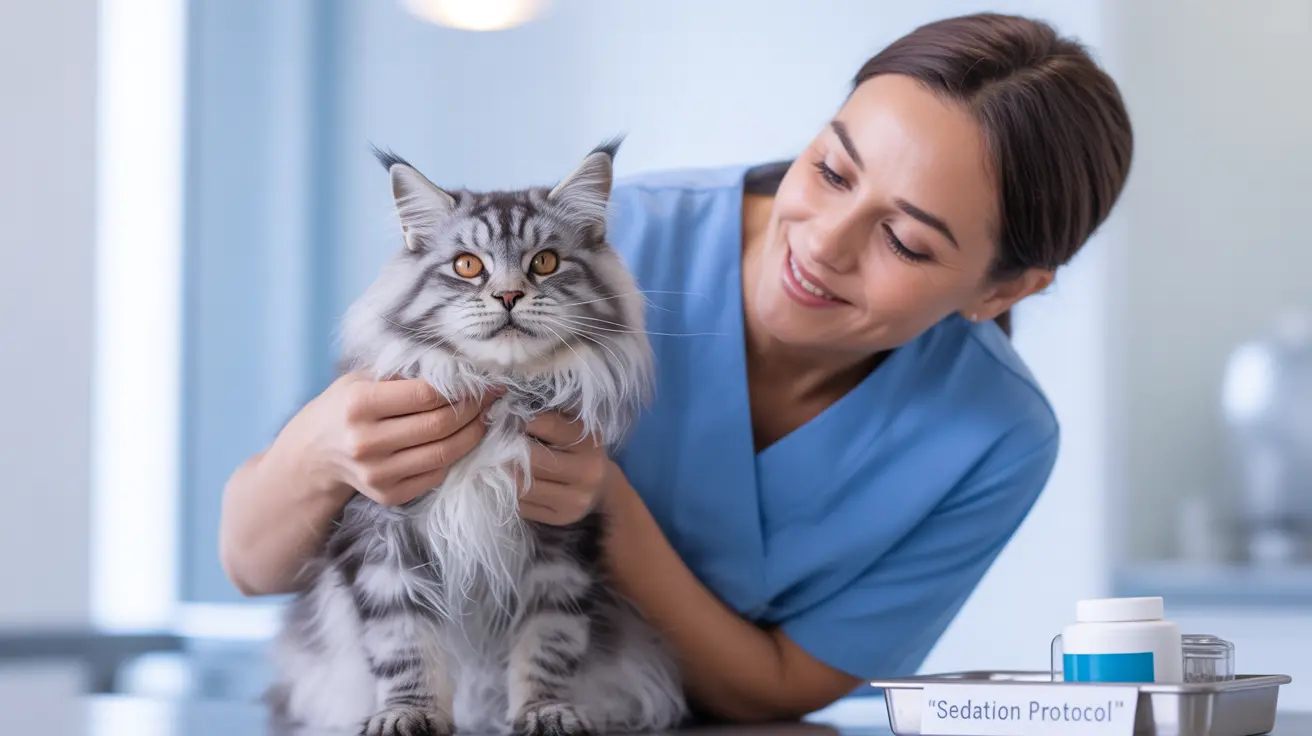Understanding When Sedation is Necessary
Not every cat requires sedation for grooming. However, certain situations may make sedation the safest option:
- Severe matting that causes pain when touched
- Extreme anxiety or fear during grooming
- Aggressive behavior that poses risks to handlers
- Medical conditions that make regular grooming difficult
- Inability to properly groom due to obesity or mobility issues
Types of Sedation Available for Cat Grooming
Veterinarians have several options when selecting appropriate sedatives for cats:
Oral Sedatives
- Gabapentin: Often prescribed for anxiety reduction
- Trazodone: Used for moderate sedation
- Benzodiazepines: For short-term calming effects
Injectable Sedatives
- Administered in veterinary settings
- Provides deeper sedation when necessary
- Allows for precise dosing control
Safety Protocols and Professional Oversight
Sedation for grooming should always be performed under veterinary supervision. This includes:
- Pre-sedation health screening
- Proper dosage calculation based on weight and health status
- Continuous monitoring of vital signs
- Emergency equipment and medications readily available
- Professional post-sedation observation
Risks and Considerations
While sedation can be safe when properly administered, it's important to understand the potential risks:
- Adverse reactions to medications
- Respiratory depression
- Cardiovascular effects
- Extended recovery time
- Possible complications in seniors or sick cats
Preparing Your Cat for Sedated Grooming
Proper preparation is essential for a safe sedated grooming experience:
- Schedule a veterinary consultation
- Fast your cat as directed
- Provide medical history
- Discuss any concerns with your veterinarian
- Follow pre-sedation instructions carefully
Post-Grooming Care and Recovery
After sedated grooming, careful monitoring is essential:
- Keep your cat in a quiet, warm environment
- Monitor breathing and behavior
- Limit food and water as directed
- Prevent jumping or climbing
- Watch for unusual symptoms
Frequently Asked Questions
When is it necessary to sedate a cat for grooming, and what conditions make sedation the best option?
Sedation becomes necessary when cats exhibit extreme anxiety, aggression, or have severe matting that makes handling painful. It's also appropriate for cats with medical conditions that make standard grooming dangerous or impossible.
What types of sedatives are safely used for cat grooming, and how do veterinarians choose the right one?
Veterinarians typically choose between oral medications like gabapentin and trazodone, or injectable sedatives for more controlled sedation. The choice depends on the cat's health status, age, and the extent of grooming needed.
What are the risks and potential side effects of sedating a cat during grooming?
Risks include adverse reactions to medication, respiratory depression, and cardiovascular effects. Side effects can include drowsiness, unsteady gait, and temporary changes in appetite or behavior.
How is a cat monitored and cared for before, during, and after sedated grooming to ensure safety?
Cats receive pre-sedation health screenings, constant monitoring of vital signs during the procedure, and professional observation during recovery. Post-procedure care includes temperature regulation and careful monitoring at home.
Are there safer alternatives to sedation for grooming anxious or aggressive cats, and how can owners prevent the need for sedation?
Alternatives include behavioral training, regular handling from a young age, positive reinforcement, and anxiety-reducing products. Regular at-home grooming and early socialization can help prevent the need for sedation.
While sedating a cat for grooming should never be taken lightly, understanding the process, risks, and proper protocols can help ensure a safe experience when necessary. Always work with qualified veterinary professionals and never attempt to sedate your cat without proper medical supervision.






